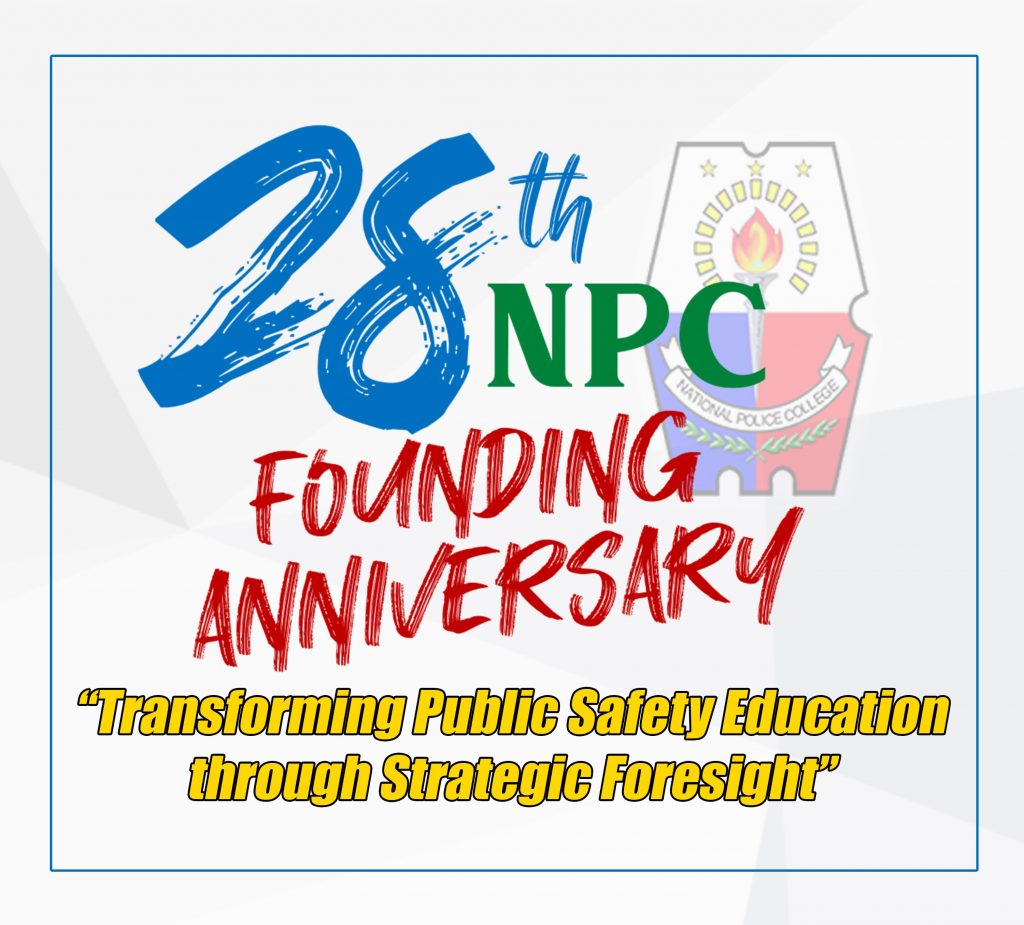
The sincerity for positive changes can be direct and purposive lodged online given the level of progress of technology. We have commenced our contribution towards these changes through the introduction of our Information Technology Infrastructure Development Program.
We said that we should be competitive. In fact, being one is a major reason to go for Digital Transformation. We need to adapt and have safeguards so that no one is left behind in public safety and security education and training programs. We will not allow disruptions that could not be handled and turned into opportunities.
The key to the adoption of online technology is the openness to interfacing. We are decided to attain concrete results and we know we can do this, not as a stand-alone institution. With the Department of Information and Communications Technology, for instance, we inked a partnership of our inter-connectivity.
To enrich the quality of our Flexible Learning Management System (FLMS), we tap other applications such as Canvas LMS, Schoology, Zoom, Webex, Viber, Messenger, Google Meet, and Google Classroom. Our learning facilitators and learners have access to these platforms and they are given the options to come up with the most appropriate combinations for particular subjects.
Moving forward, we are pursuing Digital Transformation. Accordingly, there are three stages that we have to satisfactorily go through. These are Digitization or fixing the past, Digitalization or fixing the present, and Digital Transformation or creating the future.
In layperson’s terms, Digitization or fixing the past is to scan all hard copies of documents or encode them to come up with electronic copies that can be stored and retrieved systematically. These elements will be put into a dynamic and relational database (DRD). Digitalization or fixing the present is to create, store and retrieve files electronically and format-ready to be part of the DRD. Lastly, Digital Transformation or creating the future is the process of putting out the DRD for access and control of learning facilitators and learners.
Given our Knowledge Management System (KMS), we will have our very own innovation by having People, Data, Culture, Software, Hardware, and Connectivity working for our primary intended result- quality delivery of education and training programs. Having insights and actions from the People and data are taken into consideration for our Actions. We have to see to it that there are behavioral changes, our decisions are based on information, not plain data, and our strategies are from adequate evaluation of information. Here, the DRD becomes vital. Databases are linked such that the basic queries can provide answers to evaluative processes. Our KMS and network of Communities of Practices (COPs) will give value-added ingredients to this undertaking. We are utilizing technology and data science in coming up with new ways of doing things. This will happen with our Operations, Administration, and Academics in the works as a team.
The future is not necessarily unknown. We may not be totally ready but with our innovations, we can manage to take on the unexpected. We will drive our institution to evolve with advancements that we aggressively seek.

 Users Today : 1
Users Today : 1 Users Yesterday : 40
Users Yesterday : 40 Users Last 7 days : 242
Users Last 7 days : 242 Users Last 30 days : 643
Users Last 30 days : 643 Users This Month : 496
Users This Month : 496 Users This Year : 5960
Users This Year : 5960 Total Users : 54365
Total Users : 54365 Views Today : 1
Views Today : 1 Views Yesterday : 116
Views Yesterday : 116 Views Last 7 days : 614
Views Last 7 days : 614 Views Last 30 days : 1785
Views Last 30 days : 1785 Views This Month : 1315
Views This Month : 1315 Views This Year : 12744
Views This Year : 12744 Total views : 115563
Total views : 115563 Who's Online : 0
Who's Online : 0